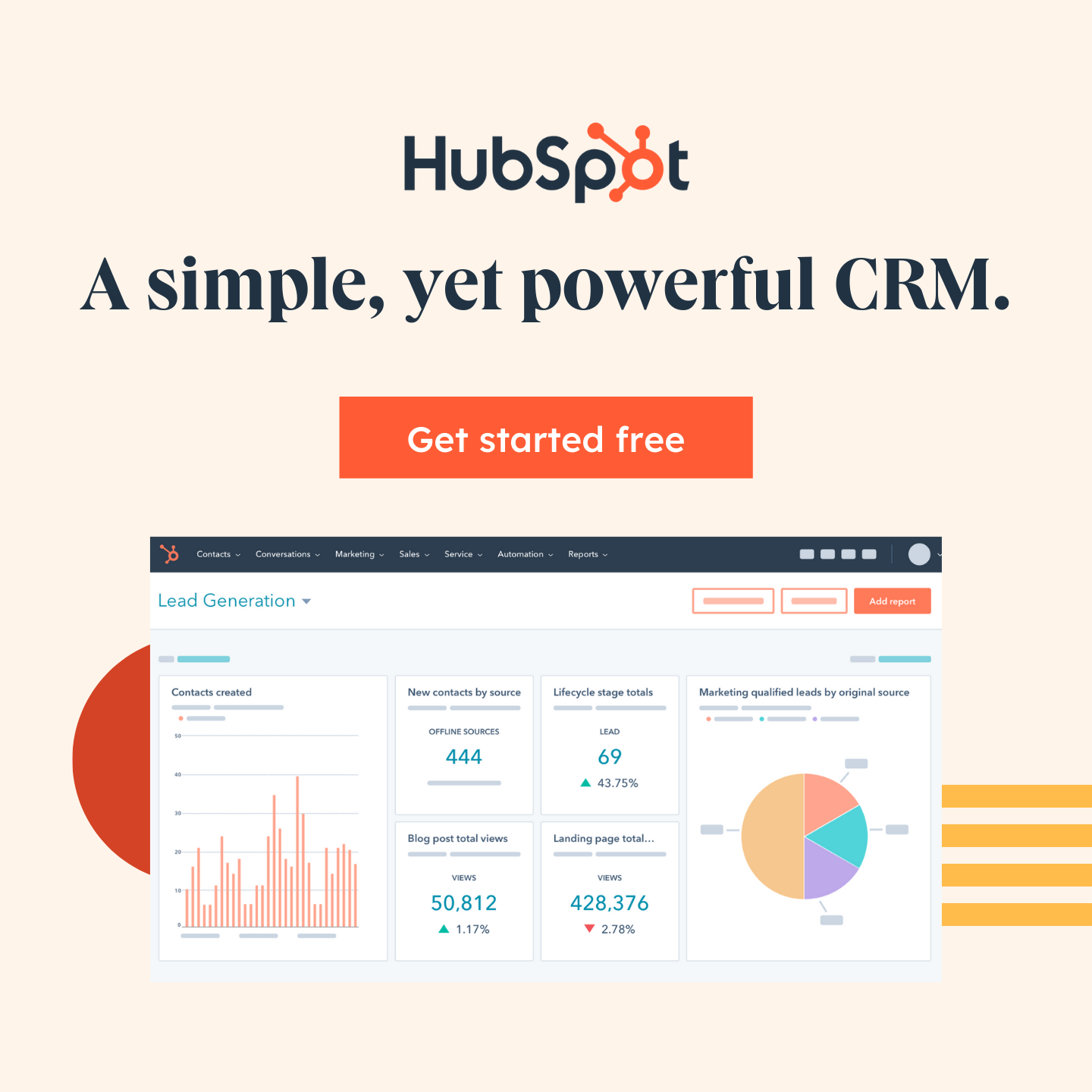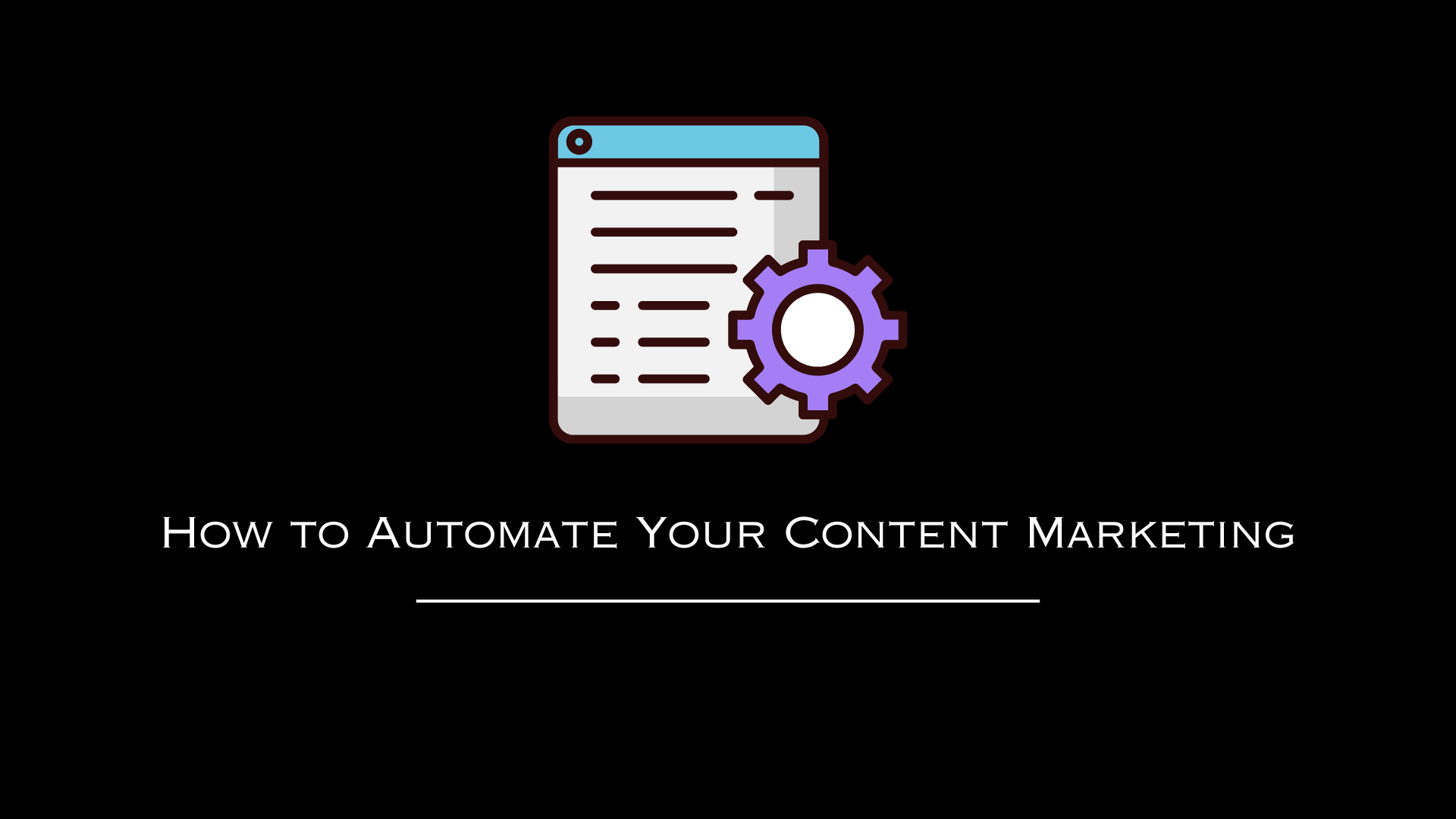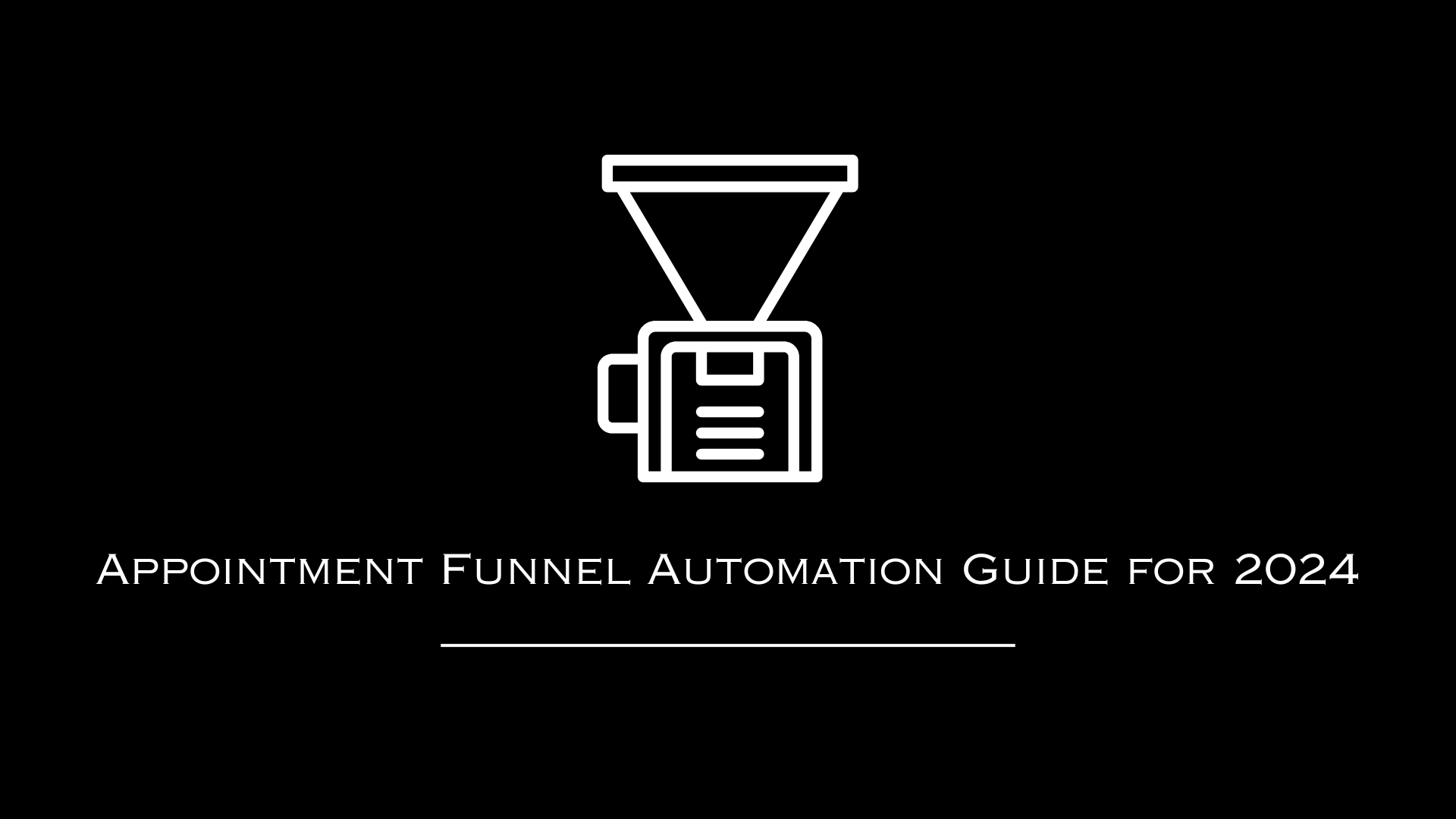AutomationLinks
This blog post has been researched, edited, and approved by expert Hannah Peake. Join our newsletter below to get our free marketing guides.
Here are four simple tips on how to start a business from scratch:
- Identify Your Niche: Choose a niche you're passionate about. This is the foundation of your business. It should be something you enjoy and are knowledgeable about, or willing to become an expert in. Brad emphasizes the importance of this choice as it determines your focus and dedication in the long term.
- Develop a Business Plan: Lay out a clear plan that outlines your business goals, target market, and strategies for reaching your audience. This plan will serve as a roadmap for your business journey.
- Choose and Register Your Business Name: Pick a name that resonates with your brand and register it. Ensure the domain name for your website is available, preferably a .com, as it is the most recognized and trusted domain suffix.
- Register Your Business and Get IRS Approval: Legalize your business by registering with your state and securing an Employer Identification Number (EIN) from the IRS. This step is crucial for taxation and legal recognition.
4 Additional Tips for Starting a Business
- Start Building an Online Presence: In today's digital world, having an online presence is crucial. Begin by creating a user-friendly website and engaging on social media platforms relevant to your target audience.
- Test Your Offer: Before going all-in, test your product or service in the market. Use social media and other digital platforms to gauge interest and gather feedback. This step helps in refining your offer and ensuring there’s a demand for it.
- Focus on Branding and Design: Your brand’s visual identity, including your logo and website design, plays a significant role in how your business is perceived. Utilize tools like Canva and Fiverr for cost-effective design solutions.
- Set Up Email Marketing: Start building an email list from day one. Platforms like HubSpot or MailChimp can be used for managing your email marketing campaigns. Regular communication with your audience through email is a powerful tool for building relationships and promoting your business.
How To start a business from scratch
Hey there, Brad Smith here. Thank you for joining me on this journey. As an online coach with 12 years of experience in the digital realm, I've navigated the complexities of starting and growing businesses online. Today, I'm here to simplify this process for you. Whether you're embarking on your entrepreneurial journey, looking to transition your business online, or seeking to expand and scale, I'm committed to guiding you through each step.
Over these years, I've had the privilege of helping over 6,000 people, from diverse backgrounds, achieve their business goals. This experience has not only enriched my understanding of the online business landscape but has also fueled my passion for coaching. Now, my mission is to extend this support to a million people. The digital world is vast and often cluttered with overwhelming information. My aim is to cut through this clutter and offer you clear, actionable steps.
I started as the owner of a nonprofit and an agency, learning firsthand the trials and tribulations of the online business world. My journey hasn't been a straight path; it's been filled with experiments, learning, and realizations. One key insight from my experience is the sheer amount of fluff and noise in the online space. My approach is different. I believe in simplifying concepts, breaking down complex processes into manageable steps, and providing practical, actionable advice.
The essence of my teaching revolves around three core aspects: starting, growing, and scaling your business online. Each of these phases has its nuances and challenges. Starting involves identifying your niche, creating a solid business plan, and laying the groundwork. Growing is about building your presence, reaching your audience, and establishing your brand. Scaling is where you expand your reach, increase your efficiency, and multiply your impact.
In this guide, I'll share the exact steps I would take if I were to start a business today. It's not just about the theory; I'll be sharing my screen, showing you the practical steps, from finding your domain name to building your social media presence. My goal is to make this as interactive and as real as it gets.
This is more than just a guide; it's a commitment from my end to support your entrepreneurial journey. Whether you're just toying with a business idea or are in the thick of scaling your venture, these insights are designed to provide value at every stage. I encourage you to engage with this content, reflect on your business, and apply these learnings.
As we dive into this guide, I'd love to learn more about you. If you've already started a business, share your website link or business name. This isn't just a one-way street; I'm here to provide personalized feedback and insights based on my decade-long experience in online business. Your participation will not only help you get direct feedback but also enrich our learning community.
So, why trust me? Well, I've lived through the ups and downs of online entrepreneurship. From my roots in a family of entrepreneurs to building and selling online businesses, I've seen it all. My goal is to share these learnings with you, so you can build a successful online business with fewer detours.
Join me on this exciting journey. Together, let's navigate the world of online business, turning your ideas into successful ventures. Stay tuned for step-by-step guidance, practical tips, and insights drawn from real-life experiences. Let's make your business dreams a reality.
Starting a Business from Scratch: A Step-by-Step Guide
Step by step guide to starting your business from scratch:
- Identifying Your Niche: "Find something you're passionate about right now because sticking with that for the next 10 to 20 years, you'll be a millionaire, maybe a billionaire, depending on your skillset."
- Business Planning: "Develop your business plan, choose your business name and legal structure."
- Domain Registration: "The first thing I ever go to is GoDaddy. Check if your domain is available, especially a .com."
- State and IRS Registration: "You need to register your business with your state and then get IRS approval."
- Branding and Website Development: "Find a website design you like for inspiration. Use tools like Fiverr or Canva for development and design."
- Testing Your Offer: "Make sure people actually want your product first. Use social media to test your offer."
- Utilizing Social Media: "Choose one or two platforms that match your niche. Build your audience and brand there."
- Building an Online Presence: "Start with a low-cost website and logo. Put your landing page up, then test your offers."
- Email Marketing and Lead Generation: "Set up an account with a tool like HubSpot. Start collecting email addresses and sending campaigns."
- Copywriting and Content Development: "Use ChatGPT to help you write content for your site. Answer their prompts, and they'll generate the copywriting for you."
Step 1. Identifying Your Niche
Finding your niche is the cornerstone of starting a successful business. It's about discovering an area you're passionate about and willing to commit to for the long haul. When you choose a niche that aligns with your interests and expertise, you're more likely to stay motivated and overcome challenges. This dedication is key to building a sustainable business that can grow into a profitable venture over time.
Quick Tips:
- Discover Your Passion: Focus on finding a business area that genuinely interests and excites you. This is the first step in identifying your niche.
- Assess Long-Term Commitment: Ensure that the niche you choose is something you can commit to for the long haul. It’s important to have a lasting interest in your chosen field.
- Align with Your Expertise: Choose a niche that aligns with your existing skills and expertise. This alignment will help you leverage your strengths and knowledge.
- Stay Motivated: Picking a niche related to your interests helps maintain motivation, especially during challenging times in your business journey.
- Overcome Challenges: Being passionate about your niche can give you the resilience to overcome inevitable obstacles and challenges in your business.
- Build Sustainability: Dedication to a well-chosen niche lays the foundation for a sustainable business model that can grow and evolve over time.
- Aim for Profitability: With sustained effort and focus, your niche can develop into a profitable venture, reaping rewards for your commitment and hard work.
Step 2. Business Planning
Developing a comprehensive business plan is a crucial step. This plan should outline your business goals, strategies to achieve them, target market analysis, and financial projections. Additionally, choosing a suitable business name and deciding on the legal structure (like LLC, sole proprietorship, etc.) are essential for establishing your brand and ensuring legal compliance.
Quick Tips:
- Create a Comprehensive Plan: Begin by developing a detailed business plan. This document will serve as your roadmap throughout your business journey.
- Outline Business Goals: Clearly define what you aim to achieve with your business. These goals should be specific, measurable, achievable, relevant, and time-bound (SMART).
- Formulate Strategies: Develop strategies for how you plan to achieve your business goals. This could include marketing plans, operational methods, and growth tactics.
- Conduct Target Market Analysis: Understand your target audience by conducting a thorough market analysis. Identify their needs, preferences, and behaviors.
- Project Financials: Include financial projections in your plan. This should cover forecasts for revenue, expenses, cash flow, and profitability.
- Choose a Business Name: Select a name that reflects your brand identity and resonates with your target market. Ensure it's unique and not already in use.
- Decide on Legal Structure: Choose a legal structure for your business (e.g., LLC, sole proprietorship, partnership). This decision impacts taxes, liability, and business operations.
- Ensure Legal Compliance: Make sure your business complies with all relevant laws and regulations. This includes registrations, licenses, and permits as required.
Step 3. Domain registration
In the digital age, your online identity starts with a domain name. Securing a domain name that reflects your brand and is easy to remember is vital. Services like GoDaddy offer a platform to check domain availability, especially for a .com, which remains the most recognized and trusted domain suffix. A well-chosen domain name can enhance your online visibility and brand recognition.
Quick Tips:
- Understand the Importance: Acknowledge that your domain name is a crucial part of your online identity and branding.
- Reflect Your Brand: Choose a domain name that accurately reflects your brand and what your business stands for.
- Easy to Remember: Ensure that the domain name is memorable, easy to spell, and simple to type. This helps potential customers find your website more easily.
- Use Trusted Services: Utilize services like GoDaddy to search for domain name availability. These platforms are user-friendly and provide a variety of options.
- Prefer .com Domains: Aim for a .com domain as it is the most recognized and trusted domain suffix globally. This helps in establishing credibility.
- Check Availability: Before finalizing, check the availability of your desired domain name to ensure it's not already taken.
- Consider Brand Recognition: A well-chosen domain name can significantly enhance your online visibility and aid in building brand recognition.
- Act Quickly: Once you find an available domain name that suits your brand, register it promptly to secure your online presence.
Step 4. State and IRS Registration
Registering your business with your state and obtaining IRS approval is essential for legal operations. This process involves obtaining necessary licenses and permits, and an Employer Identification Number (EIN) for tax purposes. Each state has different requirements, so it’s important to understand the specifics for your location.
Quick Tips:
- Understand the Necessity: Acknowledge that registering your business with your state and obtaining IRS approval is essential for legally operating your business.
- Obtain Licenses and Permits: Determine the specific licenses and permits required for your business type and industry. This can vary significantly depending on your business activities and location.
- Apply for an EIN: Obtain an Employer Identification Number (EIN) from the IRS. This is necessary for tax purposes and is used to identify your business entity.
- Research State Requirements: Each state has its own set of rules and requirements for business registration. It's important to research and understand the specifics for your state.
- Follow Local Regulations: In addition to state requirements, be aware of any local regulations or additional permits required by your city or county.
- Prepare Documentation: Ensure all your documentation, such as articles of incorporation for corporations or articles of organization for LLCs, is in order before applying.
- File with the State: Complete and submit the necessary paperwork to officially register your business with your state.
- Stay Compliant: Regularly review your business registration and licenses to ensure ongoing compliance with all state and IRS regulations.
Step 5. Branding and Website Development
Your brand identity and website are your business's digital storefront. They should reflect your brand's values and appeal to your target audience. Utilizing design tools like Fiverr or Canva can help in creating a professional-looking website and logo at a cost-effective rate. Remember, your website is often the first interaction potential customers have with your business.
Quick Tips:
- Recognize the Importance: Understand that your website and brand identity serve as your digital storefront and are often the first point of interaction with potential customers.
- Reflect Brand Values: Design your website in a way that it clearly reflects your brand’s values, ethos, and what you stand for.
- Target Audience Appeal: Ensure that the website’s design, language, and content are tailored to appeal to your target audience.
- Use Design Tools: Leverage design tools like Fiverr or Canva for designing your website and logo. These platforms offer professional services at cost-effective rates.
- Professional Look: Aim for a professional and clean design for your website. This enhances credibility and trustworthiness.
- User-Friendly Navigation: Make sure your website is easy to navigate. A user-friendly interface enhances customer experience and engagement.
- Mobile Responsiveness: Ensure your website is mobile-responsive, as a significant portion of users access websites via smartphones.
- SEO Optimization: Optimize your website for search engines to improve visibility and attract more organic traffic.
- Regular Updates: Keep your website updated with the latest information about your products, services, and any company news.
- Monitor and Improve: Continuously monitor your website’s performance and make improvements based on customer feedback and analytics.
Step 6. Testing Your Offer
Before fully launching your product or service, validate it in the market. Use social media and other digital platforms to gauge interest and gather feedback. This step can save resources by ensuring there is a market demand for your offer, allowing you to make necessary adjustments before a full-scale launch.
Quick Tips:
- Validate Before Launch: Before fully launching your product or service, test it in your target market to validate its appeal and demand.
- Use Digital Platforms: Leverage social media and other digital platforms to introduce your product or service to a segment of your target audience.
- Gauge Interest: Monitor how potential customers react to your offer. Look for signs of interest like engagement, inquiries, and feedback.
- Collect Feedback: Actively seek out and collect feedback from your audience. This can be through comments, surveys, or direct customer interactions.
- Save Resources: Testing your offer helps in conserving resources by avoiding the full-scale launch of a product or service with limited market demand.
- Make Adjustments: Use the feedback and data collected to make necessary adjustments to your product, service, or marketing strategy.
- Assess Market Fit: Determine if your offer meets the needs and wants of your target market effectively.
- Plan for Scalability: Use the insights gained from this test phase to plan for scaling your product or service once it is fully launched.
Step 7. Utilizing Social Media
Social media platforms are powerful tools for building your brand and connecting with your audience. Choose platforms that are most relevant to your niche and audience. Consistent and engaging content can help in building a loyal community and enhance brand visibility.
Quick Tips:
- Recognize the Power of Social Media: Understand that social media is a crucial tool for building your brand’s presence and connecting with your audience.
- Select Relevant Platforms: Choose social media platforms that are most relevant to your business niche and where your target audience is most active.
- Create Consistent Content: Develop a content strategy that allows for regular and consistent posting. Consistency helps in keeping your audience engaged and informed.
- Engage with Your Audience: Actively engage with your followers through comments, messages, and posts. This interaction builds a stronger connection with your audience.
- Provide Value: Ensure that your content is valuable and interesting to your audience. This could be educational, informative, entertaining, or a mix.
- Build a Community: Aim to create a community around your brand on social media. Encourage discussions, share user-generated content, and foster a sense of belonging.
- Increase Brand Visibility: Use social media to increase your brand’s visibility. This can be through regular posts, collaborations, or paid advertising.
- Monitor Feedback: Pay attention to the feedback you receive on social media. It can provide valuable insights into your audience’s preferences and perceptions.
- Analyze Performance: Regularly analyze the performance of your social media activities using analytics tools. This helps in understanding what works and what needs improvement.
- Stay Updated: Keep up with the latest trends and changes in social media to ensure your strategies remain effective and relevant.
Step 8. Building an Online Presence
Start with a basic, low-cost website and a simple logo. Initially, focus on creating a landing page that captures leads. This approach allows you to start building your online presence and customer base without significant upfront investment.
Quick Tips:
- Start with Basics: Begin by setting up a basic, low-cost website. This serves as your online foundation without requiring a large initial investment.
- Create a Simple Logo: Design a simple yet effective logo that represents your brand. This can be done using cost-effective design tools or services.
- Focus on a Landing Page: Initially, concentrate on creating a compelling landing page on your website. This page should be designed to capture leads and introduce visitors to your business.
- Capture Leads: Include elements on your landing page that encourage visitors to sign up or provide their contact information, such as a newsletter sign-up or a free download.
- Build Online Presence: Use your website and landing page to start establishing your online presence. This is your digital footprint where potential customers can find and interact with you.
- Minimize Upfront Costs: By starting with a basic website and landing page, you can minimize your upfront costs while still reaching out to your audience.
- Test and Iterate: Use the initial response to your website and landing page to test and refine your approach. Make changes based on user feedback and performance data.
- Grow Your Customer Base: As you capture leads, focus on growing your customer base by engaging with your leads through email marketing and social media interactions.
- Expand Gradually: Once your basic website and landing page are established and performing well, consider expanding your online presence with additional pages, content, and features.
- Invest as You Grow:
As your business grows, reinvest in your online presence to make it more robust, feature-rich, and aligned with your expanding business needs.
Step 9. Email Marketing and Lead Generation
Email marketing remains one of the most effective ways to communicate with potential and existing customers. Tools like HubSpot allow you to manage your email campaigns and lead generation efforts. Regularly engaging with your audience through email helps in building relationships and driving conversions.
Quick Tips:
- Understand the Value: Recognize that email marketing is a highly effective way to reach both potential and existing customers.
- Choose the Right Tool: Utilize tools like HubSpot for managing your email campaigns. These platforms offer features to create, send, and track the effectiveness of your emails.
- Build Your Email List: Focus on building your email list by capturing emails through your website, social media channels, and other marketing efforts.
- Regular Engagement: Regularly send out emails to your list to keep your audience engaged. This could include newsletters, updates, promotions, or educational content.
- Create Quality Content: Ensure that the content of your emails is relevant, valuable, and interesting to your audience to maintain their interest and engagement.
- Personalize Your Emails: Use personalization techniques like addressing subscribers by name or tailoring content based on their interests or past behavior.
- Segment Your Audience: Segment your email list based on criteria like demographics, behavior, or engagement level to send more targeted and effective messages.
- Track and Analyze: Monitor the performance of your email campaigns through metrics like open rates, click-through rates, and conversions. Use this data to refine your strategy.
- Compliance with Regulations: Ensure that your email marketing practices comply with regulations like GDPR or CAN-SPAM Act, which govern the use of emails for marketing purposes.
- Use Lead Magnets: Implement lead magnets (like free ebooks, webinars, or discount codes) to encourage more sign-ups and generate leads.
Step 10. Copywriting and Content Development
Compelling content is key to engaging your audience. Utilize AI tools like ChatGPT to assist in creating content that resonates with your audience. Well-crafted content can improve SEO, attract more visitors to your site, and ultimately contribute to your business growth.
Quick Tips:
- Recognize the Importance of Content: Understand that compelling content is crucial for engaging your audience and is a key component of your digital marketing strategy.
- Use AI Assistance: Employ AI tools like ChatGPT to help in creating high-quality content. These tools can provide suggestions, generate ideas, and even help in writing drafts.
- Create Resonating Content: Aim to produce content that resonates with your audience. This involves understanding their needs, interests, and pain points.
- Focus on Quality: Ensure your content is well-written, informative, and relevant. Quality content is more likely to engage readers and encourage them to interact with your brand.
- Improve SEO: Craft your content with SEO in mind. Use relevant keywords, meta descriptions, and engaging titles to improve your website’s search engine ranking.
- Drive Web Traffic: Quality content can attract more visitors to your site. Regularly updated and relevant content can draw in a consistent stream of traffic.
- Engage and Inform: Use your content to not only engage customers but also to inform and educate them about your products, services, or industry.
- Reflect Your Brand Voice: Ensure that the content reflects your brand’s voice and tone. Consistency in voice helps in building brand identity and trust.
- Analyze and Adapt: Regularly analyze the performance of your content. Look at metrics like page views, time spent on page, and social shares to gauge effectiveness.
- Continuous Improvement:
Continually refine and improve your content strategy based on feedback and performance metrics.
Personal Experience and Insights
Growing up in a family of entrepreneurs has profoundly shaped my approach to business and life. My grandfather set the foundation, establishing a successful tire shop in Michigan. His dedication and hard work laid the groundwork for our family's entrepreneurial spirit. My grandmother, too, was a pioneer in her own right, engaging in one of the first multi-level marketing businesses with Shaklee. Her journey taught me that entrepreneurship isn’t just about big ventures; it’s about the hustle, the willingness to take financial and time risks for the sake of a vision.
This spirit of entrepreneurship was passed down to my father, who owned his own construction and cabinet business. Being surrounded by such strong examples of entrepreneurship, I was naturally inclined to start young. At the age of 15, I launched my first business, building garden benches. This early venture was more than just a business; it was a hands-on education in patience, perseverance, and the importance of commitment.
Through these experiences, the most crucial lesson I've learned is the importance of focus. The entrepreneurial path is often littered with distractions and new opportunities that can lead you away from your core vision. In my journey, I’ve seen how easy it is to get sidetracked. After my initial venture with garden benches, I explored various paths – from coaching hockey players to starting a personal training business, then moving on to an online fitness directory. Each of these endeavors taught me something valuable, but they also reflected a pattern of shifting focus.
The temptation to pivot to the 'next big thing' is a common trap for many entrepreneurs. However, true success and growth come from dedication to a single path. It’s about digging deep into one area, becoming an expert, and not wavering in the face of new, shiny opportunities. This doesn’t mean being rigid and inflexible but rather fully exploring and maximizing the potential of one path before considering a shift.
As I reflect on my journey, I realize if I had stuck with one of my early passions, like hockey coaching, the results could have been vastly different. This insight is something I want to pass on to other entrepreneurs – find your niche, your passion, and give it your all for a substantial period. Success in entrepreneurship is a long game, often taking years, if not decades, to materialize fully.
In conclusion, my personal journey and family heritage have instilled in me the values of perseverance, focus, and adaptability. These are the
pillars that I believe are essential for any entrepreneur. As you embark on your business journey, remember these lessons. Stay focused, be patient, and dedicate yourself to your chosen path, and success will follow.
AutomationLinks
AutomationLinks is a digital marketing agency located in Wilmington North Carolina. We have worked with over 6,000 businesses and nonprofits over the last 10 years. We believe in a relationship marketing approach to help you turn visitors into customers using automation.





























